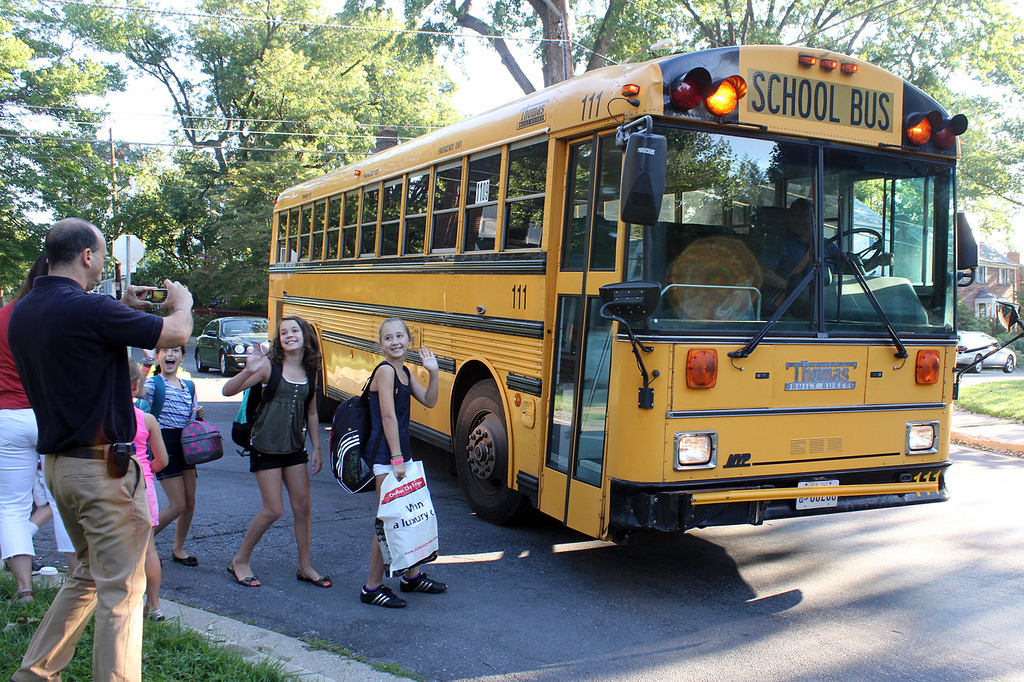
Time to hit the books.
Back-to-school commercials have inundated advertising space for the past month, but the first day of school is finally just around the corner (or already here!).
In honor of a new school year, the Alliance for American Manufacturing (AAM) has prepared a reading list for American Manufacturing Literature 101. Time to buckle down, students.
FIRST QUARTER: “Horrorstör” by Grady Hendrix
The start of the school year spells nothing but joy for some, but more reluctant students require a bit of enticement to get them back into the classroom. Thus, we celebrate the beginning of this year’s academic journey with the most comedic selection in our reading list: “Horrorstör,” a parody of big box stores from cover to cover, literally (buy a physical copy of the book to fully appreciate the author’s work).
Set in a megastore that sells inexpensive Scandinavian-inspired furniture for the masses, “Horrorstör” examines the dehumanization of the working class through the eyes of the store’s retail employees as they grapple with paranormal apparitions. These ghostly encounters ultimately analogize the modern working-class experience with that of a 19th-century prison.
With just the right amount of absurdity, this text thoughtfully critiques how workers are too often sidelined in favor of profits.
FIELD TRIP: See “Sweat” by Lynn Nottage in a venue near you (Sept. 27-Oct. 23).
This fall, Lynn Nottage’s Pulitzer-prize-winning play “Sweat” is touring 18 “Rust Belt” cities in case you couldn’t catch it on Broadway in 2017.
Based on Nottage’s interviews with Pennsylvania steel workers, the play explores their experiences over the course of a metal-tuning plant’s closure in Reading, Penn., a former manufacturing powerhouse that has become one of the poorest cities of America.
Starting on Sept. 27 in Erie County, Penn., and ending on Oct. 23 in Hayward, Wis., performances are completely free and will be supplemented by workshops and events for local communities.
The tour’s full schedule can be found here.
SECOND QUARTER: “Factory Man” and “Dopesick” by Beth Macy
Award-winning journalist Beth Macy’s New York Times bestseller “Factory Man” is a nonfiction piece full of larger-than-life characters. Over the course of the book, Macy delves deep into the complicated family history behind the furniture industry in North Carolina and one man’s epic mission to restore the furniture-manufacturing industry in America.
“Dopesick,” an essential sequel to “Factory Man” published just this summer, examines the opioid crisis that has been left in the wake of factory closures in rural America. Macy, tracing the opioid crisis’s origin from the very beginning of opioid production to its current state, considers how America can slow the tide of addiction and ensure the crisis doesn’t repeat itself yet again.
Listen to the latest episode of The Manufacturing Report for Macy’s conversation with AAM President Scott Paul about “Dopesick” and the impact of addiction on displaced worker communities.
WINTER BREAK:
We'll have a new one this year (of course) but in the meantime, check out last year's American-made holiday gift guide.
THIRD QUARTER: “China Rx: Exposing the Risks of America’s Dependence on China for Medicine” by Rosemary Gibson and Janardan Prasad Singh
Just in time for flu season, we’ve assigned “China Rx: Exposing the Risks of America’s Dependence on China for Medicine” by Rosemary Gibson and Janardan Prasad Singh.
Over-the-counter and pharmaceutical medicines are an integral part of most Americans’ lives, but there are frightening vulnerabilities when it comes to their production. Most active ingredients in America’s drugs are made in China and India. Indeed, China’s mission, as discussed in “China Rx,” is to become the world’s pharmacy, quashing drug manufacturing capabilities in other countries in order to do so.
Learn more about how America can reduce the risks posed by offshore drug production and revitalize domestic production in Gibson’s interview on The Manufacturing Report.
FOURTH QUARTER: “American Rust” By Philipp Meyer
Widely praised as one of the best books of 2009, Philipp Meyer’s austere novel “American Rust” portrays the turmoil that often follows factory closures and the demise of the middle class. Set in Pennsylvania steel country, the story follows the journey of two young men who flee their homes in search of economic opportunity, left with few options in their former mill town. Unfortunately, the men encounter a stream of tragedies in their search for better lives.
COMPANION TEXT: “The Half-Life of Deindustrialization” by Sherry Lee Linkon
Sherry Lee Linkon’s literary criticism of working-class literature, “The Half-Life of Deindustrialization” serves as the anchor text of our reading list. Don't miss it! Though published as an academic text, her writing is engaging and accessible, offering analysis of the working-class literary genre and specific works.
Learn more about Linkon’s work in an episode of The Manufacturing Report podcast.
SUMMER BREAK CINEMA: “American Made Movie”
You worked hard this school year, so set aside some summer screen time for “American Made Movie.”
This documentary explores the cost of offshoring manufacturing, but more importantly shows the innovation and quality that makes American manufacturing great.
Here’s an interview with producer Vincent Vittorio on what he sees for the future of American manufacturing.
EXTRA CREDIT: There's plenty more to read.
These reading selections just barely scratch the surface when it comes to the literature of manufacturing and the working class. Find more recommendations on Linkon’s reading guide to deindustrialization literature.
We’d love to hear what you think of the list and what works you think should be added, so join the conversation and let us know!
PS: Still in need of some last-minute school supplies? Check this list for our top picks for class preparedness.
